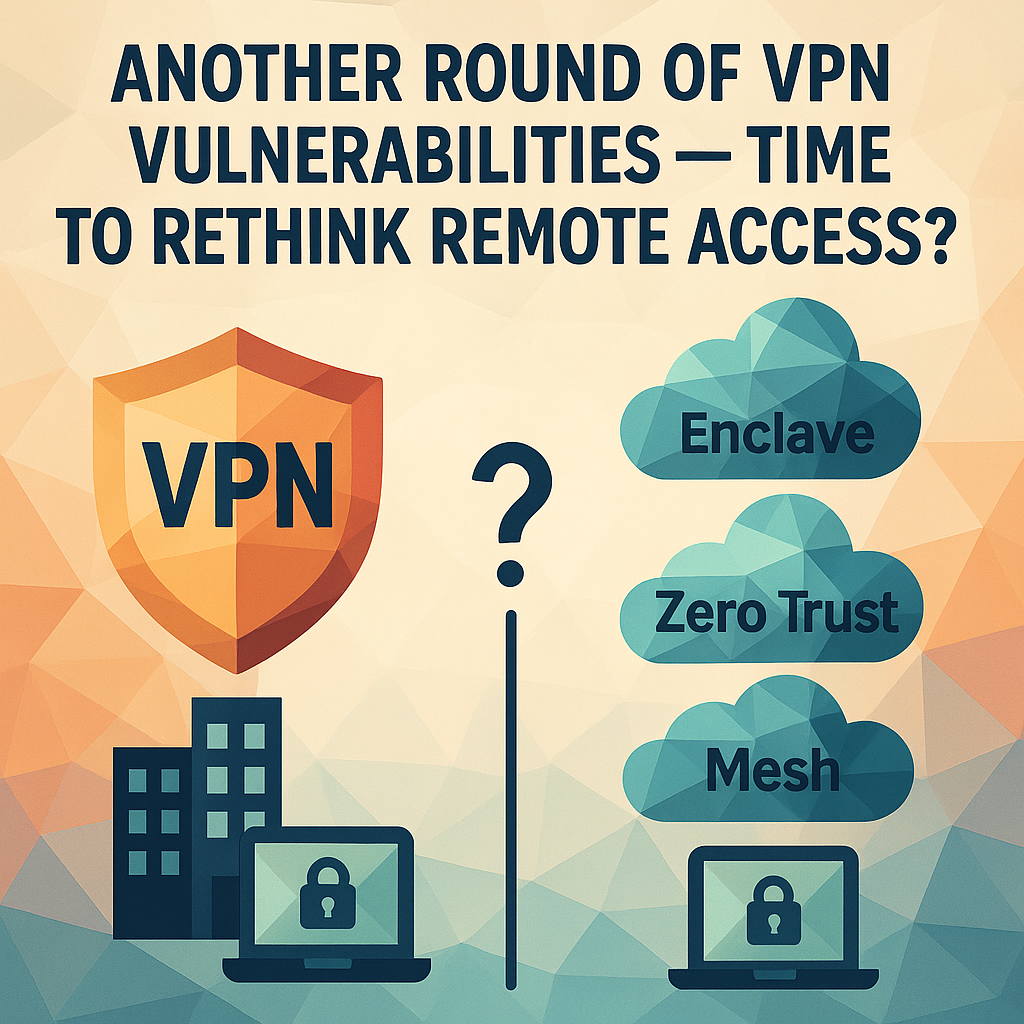Yet another security flaw in SSL VPN technology has made headlines, and it’s raising an important question: is the traditional VPN model still the right fit for most businesses?
For years, SSL VPNs built into firewalls from vendors like SonicWall, Fortinet, and others have been a common way to give remote workers secure access to internal systems. They’ve worked — most of the time — but the constant patch cycles, exposed login portals, and the overhead of managing users and devices have turned them into a growing liability.
The Risk Profile is Changing
SSL VPNs have one inherent weakness: they expose an access point directly to the internet. This makes them an attractive target for attackers, and recent years have shown how quickly vulnerabilities in these systems are exploited. Even with multi-factor authentication enabled, attackers have found ways to bypass protections if there’s a flaw in the vendor’s implementation.
When every new zero-day exploit becomes a race between attackers and your patching process, it’s worth asking if the model itself needs to change.
Exploring Alternatives

Forward-looking IT providers are increasingly turning to newer approaches, such as:
- Enclave – A modern approach to secure remote connectivity that hides infrastructure from public exposure, eliminating the “always listening” problem of traditional VPNs.
- Mesh-based VPN solutions like WireGuard, Tailscale, Netmaker, or NetBird, which can simplify management and reduce exposed attack surfaces.
- Zero Trust Network Access (ZTNA) models, which only grant access to specific applications and services, rather than the whole network.
- SASE (Secure Access Service Edge) solutions that combine secure remote access with other cloud-delivered security capabilities.
Each of these comes with its own pros, cons, and change management challenges — but they all share a goal: eliminate the “open door” VPN approach that attackers have repeatedly abused.
Balancing Security and Usability
Any shift in remote access technology requires user adoption, and that can be a challenge. Employees are comfortable with what they know, and changes can disrupt workflows if not managed carefully. Clear communication, training, and phased rollouts can help minimize resistance.
For businesses still using traditional SSL VPNs, the bare minimum is to harden them beyond the basics: enforce strong authentication, limit access to specific IPs or geographies where possible, and monitor access logs for unusual patterns.
What Businesses Should Do Next
The first step is knowing exactly what remote access technologies are in place, how they’re secured, and whether they’ve been fully patched and configured to best practices. Don’t assume “it’s secure” because the vendor says so — verify it.
Sometimes the best move is to bring in a fresh set of eyes. A qualified third party can review your current remote access setup, identify potential vulnerabilities, and recommend safer alternatives. They can also work with your IT provider to implement changes with minimal disruption.
The reality is that remote work isn’t going away, and neither are attacks on VPN technology. The businesses that adapt now — moving toward more modern, layered access solutions — will be the ones best positioned to avoid becoming the next breach headline.
If your remote access still relies on a door that’s always listening for a knock, it’s time to think about whether that door should exist at all.

